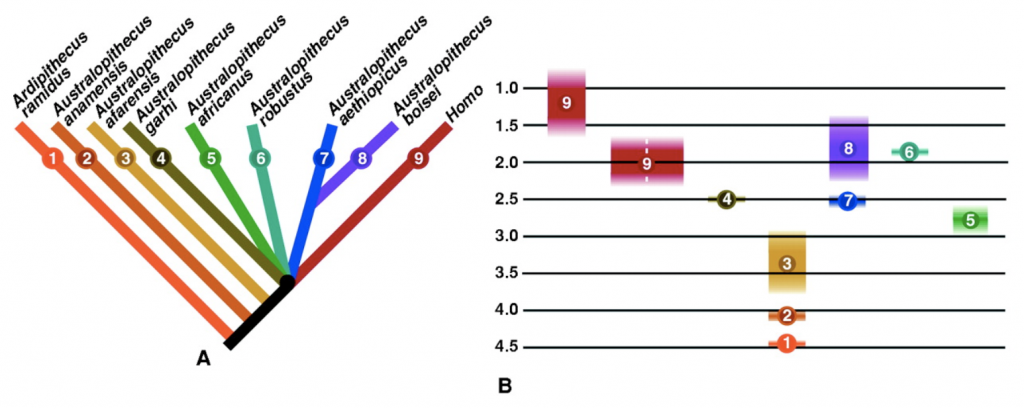Basic Tree Thinking Assessment 2 (BTTA 2)
Purpose
The Basic Tree Thinking Assessment 2 (BTTA 2) is designed to evaluate your tree-thinking skills in majors undergraduate biology curriculum concentrated on evolutionary biology. Specific topics include the theory of evolution by Charles Darwin.
Population
The BTTA 2 is commonly administered in introductory biological evolution college courses.
Typical Performance
We do not know of any published results with typical performance. As the LASSO platform collects more data, we will be able to offer better guidance on student performance.
Example question:

B. Asfaw et al. Australopithecus garhi: a new species of early hominid from Ethiopia. Science 284, 629 (1999). [The above is only a portion of the figure]
10) The above tree summarizes the inferred relationships among a number of hominid fossils as related to humans (Homo). The point where multiple lineages arise from a single node (a polytomy) is here intended to indicate uncertainty rather than evidence of a simultaneous divergence of an ancestral lineage into five descendant lineages. The fossil ages of each taxon are color-coded on the right. Note that fossils of species 7 predate those of its sister taxon, species 8. If the tree is an accurate representation of the evolutionary history of these species, what is the minimum age we could infer for lineage 8?
a) 2.25
b) 2.5
c) 3.0
d) It cannot be determined from these data
Validity
The BTTA2 was originally developed in 2005. The validation has focused on college students but spans several institutions. Items were examined for difficulty, discrimination, and assessment reliability. Relevant articles are listed below:
● Baum, D. A., Smith, S. D., & Donovan, S. S. (2005). The tree-thinking challenge. Science, 310(5750), 979-980.
Research
We recommend using Google Scholar and the citations listed under validation to find articles of interest.
Example LASSO Report
Please follow this link to our example report for concept inventories.
